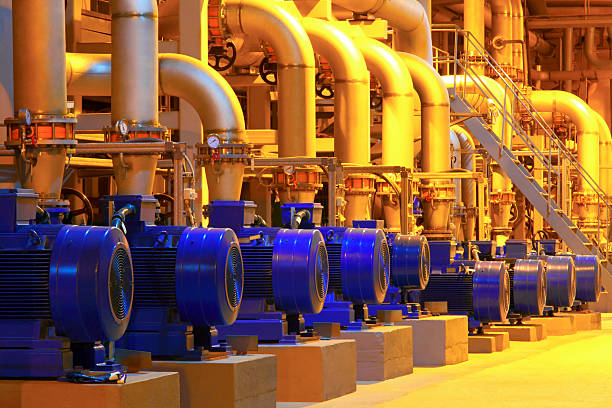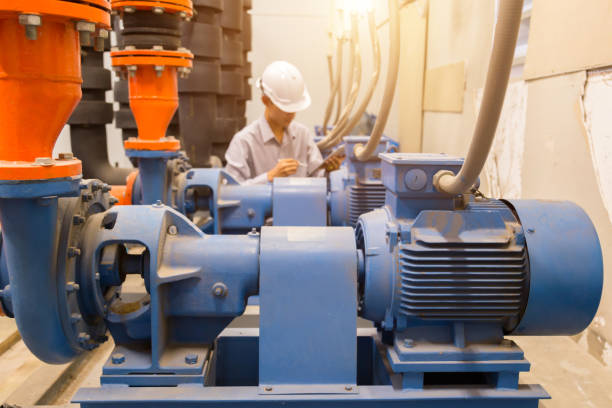With the progress in science and technology, permanent magnet generators have gradually replaced, due to their efficiency and reliability, the conventional ones and are becoming an important part of modern power generation systems. Though having several advantages over their traditional counterparts, permanent magnet generators also face some challenges.

Advantages of permanent magnet generators
Permanent magnet generators have lately become more vital in contemporary power generation owing to numerous advantages over conventional generators. The following overview will explore efficiency, simplicity, reliability, environmental impact, and intelligent control.
High Efficiency and Energy Saving
High-Performance Permanent Magnet Material
High Energy Conversion Efficiency and Power Density
Reduced Energy Waste
Energy Savings
Simple Structure
Fewer Parts and Simpler Design
Reduced Manufacturing and Maintenance Costs
Compact Size and Easy Installation
High Reliability
Stability and Reliability
Low Failure Rate
Long Service Life
Lower Maintenance Costs and Longer Maintenance Intervals
Environmental Conservation
Sustainable and Green Practices
Comparison with Traditional Generators
Commitment to Ecologically Responsible Operations
Intelligent Control
Integration with Intelligent Control Systems
Remote Monitoring and Control
Automatic Adjustment and Control
Enhanced Efficiency and Reliability
Permanent magnet generators boast incomparable advantages in efficiency, reliability, environmental friendliness, and intelligent control. Because of their great potential to enhance operation efficiency and sustainability, they have drawn more and more attention in different applications.

Challenges for permanent magnet generators
Cost Problem
High Manufacturing Cost
Progress in Cost Reduction
Maintenance Issues
Regular Maintenance Requirements
Need for Professional Technicians
Specialized Maintenance for Unique Applications
Magnetic Field Problem
Magnet Demagnetization
Increased Complexity and Cost
Technical Problems
Continuous Technological Development
Personnel Training and Technology Accumulation
Although permanent magnet generators boast such merits, cost, maintenance, stability of the magnetic field, and technological development are some of the major challenges that need to be overcome before their widespread implementation. Overcoming these hurdles requires continued research, innovation, and investment in people’s training to realize the actual value of PMGs in multiple applications.
The transformation of traditional generators into permanent magnet technology
The transformation of conventional generators to permanent magnet technology is not a sudden one and takes place in phases or steps. In this, we need to solve some prime issues. Firstly, the cost of producing permanent magnet generators should be reduced by the industry, with a production scale increase to allow further cost amortization; secondly, technical research and development and innovation should be reinforced to improve performance and stability; and last but not least, the strengthening of market promotion and popularization will improve the user’s awareness and acceptance of permanent magnet generators. It is also necessary to pay attention to the transformation and upgrading of traditional generators, as well as to deal with the problem of retired units.
Reducing Manufacturing Costs and Increasing Production Scale
Manufacturing Cost Reduction
Among the major challenges to more common applications of PMGs, high manufacturing costs for permanent magnet materials are a big barrier. Therefore, much more research is required relating to alternative materials or alternative fabrication processes that contribute to cost reduction while exhibiting comparable performance.
Increasing Production Scale
Large-scale production methods can ameliorencia the initial costs associated with the manufacturing of PMG. Greater scale can lead to cost economies that reduce the marginal cost and therefore the final price at which PMG is offered, thus, making the PMG relatively more economical.
Strengthening Technical Research and Development
Performance and Stability Improvement
Technical research and development should be directed to enhance the performance and stability of PMGs, focusing on increasing energy conversion efficiency, power density, assurance of magnetic field stability, and prevention of demagnetization.
Innovation
Innovation is one of the intrinsic driving forces for permanent magnet technology. New ideas, together with breakthroughs in material science, magnet technology, and control systems, could bring about significant improvement and reliability in the performance of PMGs.
Strengthening Market Promotion and Popularization
Increasing Awareness and Acceptance
Market promotion and educational campaigns are very necessary to increase awareness and acceptance among end-users of PMGs. Support for the adoption of permanent magnet technology can be gained by emphasizing its benefits, such as energy savings, reduced maintenance, and environmental sustainability.
Addressing User Concerns
Clearing doubts and misconceptions in the minds of users about PMGs is quite necessary for the wide dissemination of PMGs. For example, clear information on reliability, durability, and long-term cost savings associated with permanent magnet technology will help alleviate apprehensions.
Transformation and Upgrading of Traditional Generators
Retrofitting Existing Generators
In addition to promoting PMGs, attention should also be given to the transformation and upgrading of existing traditional generators. Retro-fitting of permanent magnet technology in older generators can extend their lifespan, improve efficiency, and reduce maintenance requirements.
Dealing with Retired Units
This, of course, means retiring and decommissioning obsolete generator units, with newer and more efficient technologies coming out continuously. These retired units have to be disposed of in an environmentally friendly manner for recycling to minimize environmental impact, thus making it sustainable.
This is a very significant opportunity to revolutionize the power generation industry with permanent magnet technology over traditional generators. Addressing key issues such as manufacturing cost, technical challenges, market promotion, and upgrading of existing infrastructure will be important in the faster dissemination of permanent magnet generators. This will go a long way in facilitating a more efficient, reliable, and sustainable energy future. Industry stakeholders, government agencies, and research institutions will have to join hands in driving this transformation forward.
Conclusion
To sum up, though permanent magnet generators go through some obstacles and certain complexities, their huge benefits, such as efficiency, reliability, and environmental friendliness, make them worth considering for the development of modern power generation systems. Having some drawbacks, like very high production costs, maintenance, or magnetic field stability, the benefits of permanent magnet technology can be considered one of the promising solutions to meet growing energy demands.
Probably the most attractive benefit of permanent magnet generators relates to the fact that they are extremely efficient. Due to the use of permanent magnet materials, they reach high energy conversion efficiency and high power density compared with the conventional generator. That means less energy is lost, therefore resulting in lower operating costs for companies and industries looking to be more energy-efficient and friendly to the environment.
Besides, permanent magnet generators boast of their reliability. The less complex structure and fewer numbers of moving parts are attributed to higher reliability and lower failure rates compared to conventional generators. Permanent magnet generators, with proper maintenance and servicing, can offer long service lives and consistent performance, hence a reliable source of power in many applications.
Besides, permanent magnet generators comply with the increasing emphasis on sustainability and environmental conservation. Permanent magnet generators reduce pollution and, therefore, minimize resource consumption, embodying the concept of green energy generation. With society being conscious of the need to live in a manner that ensures the survival of future generations, permanent magnet technology might help in the fight against climate change and ensure resources are preserved for generations to come.
While some challenges might be faced, such as manufacturing cost, maintenance requirements, and stability in magnetic fields, all these are expected to be overcome with ongoing technological and market development. As continuous research and development increase in enhancing performance and reliability, so will the expanded applicability of permanent magnet generators be seen in renewable energy generation, industrial manufacturing, transportation, and many other areas.
Conclusively, despite facing a lot of challenges with permanent magnet generators, huge potential exists for them to change how we generate and use electricity. It’s expected that permanent magnet technologies will be more widely adopted under the rapid pace of technological innovations and changes in market demands to achieve efficiency, reliability, and sustainability in future power generation. This should contribute much to the sustainable development of mankind and provide a good future for the coming generation.